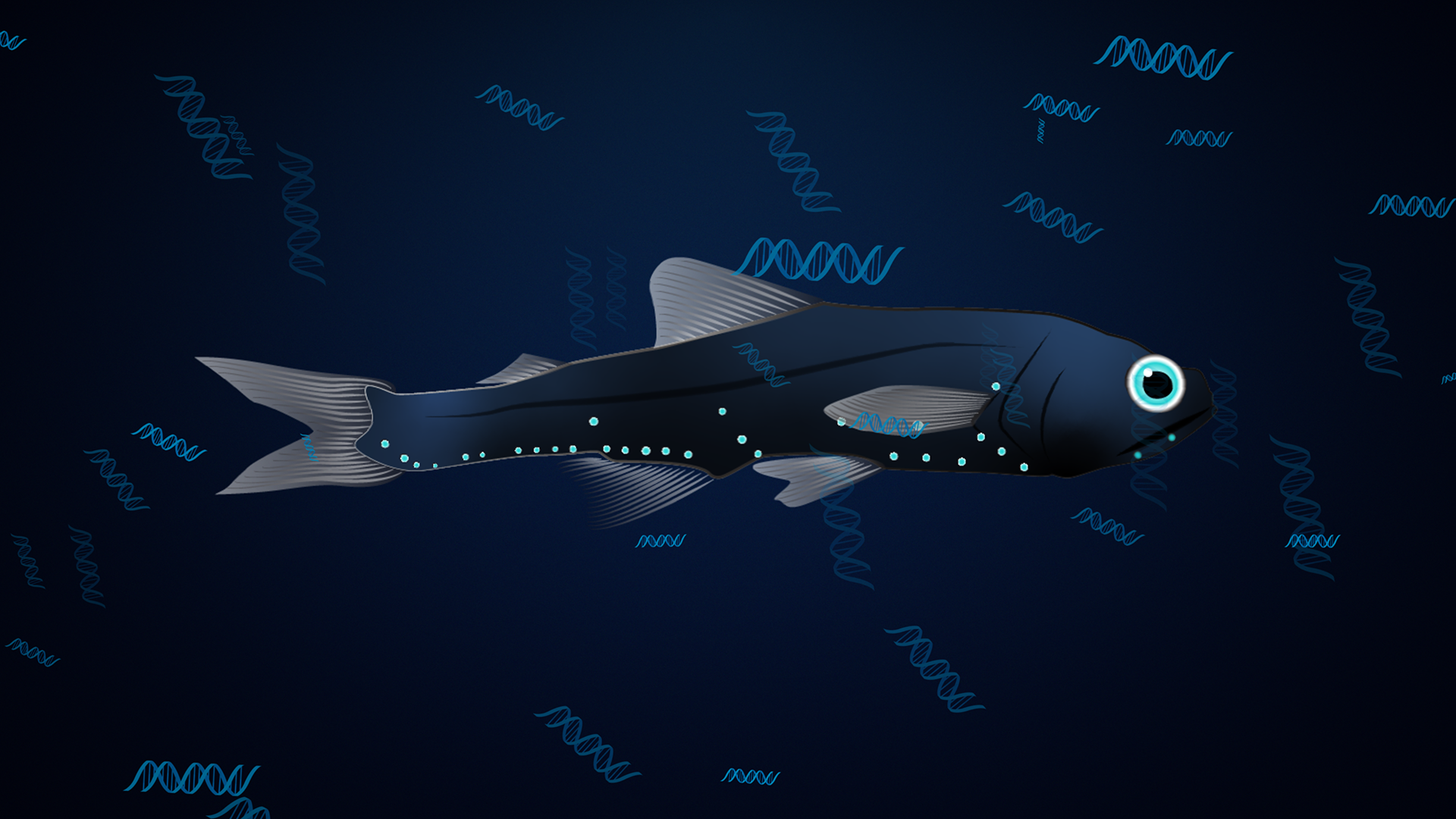Tagging sharks to study the twilight zone December 4, 2019
The movements of big predators can give scientists studying the ocean twilight zone an unprecedented window into life deep below the surface.
Former MIT-WHOI Joint Program graduate student and current University of Washington post-doc Camrin Braun and his team on the charter fishing vessel Machaca tagged two porbeagles, a relative of the goblin shark, about 30 miles east of Chatham, Mass., in 2019. One shark was a female nearly seven feet long and weighing 270 pounds. A male came alongside the boat while the team was tagging her and, when they were finished, they quickly landed the curious male, which measured 6.5 feet and weighed 230 pounds.
The team equipped both with fin-mounted SPOT satellite tags, which will report their location each time they surface and can last up to five years. For scientists on WHOI’s Ocean Twilight Zone team, big, deep-diving predators like these are an important indicator of where prey animals are collecting in the mesopelagic.
In short, the predator will go where the prey is.
Check out Braun’s work tagging swordfish:
https://www.whoi.edu/news-insights/co…
And learn more about the twilight zone:
https://twilightzone.whoi.edu







